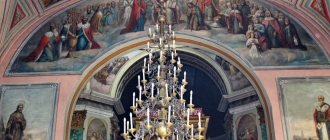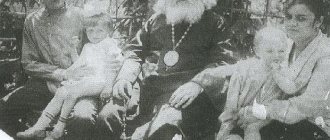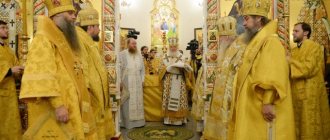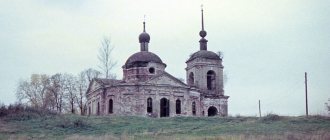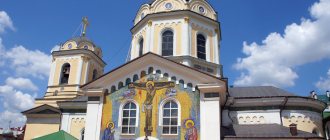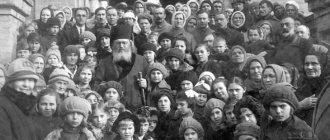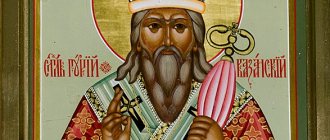Mir
Russia Republic of Crimea Evpatoria Church of St. Luke (Evpatoria) Map is loading...
{"format":"leaflet","minzoom":false,"maxzoom":false,"limit":50,"offset":0,"link":"all","sort":[""], "order":[],"headers":"show","mainlabel":"","intro":"","outro":"","searchlabel":"\u2026 \u0441\u043b\u0435\ u0434\u0443\u044e\u0449\u0438\u0435 \u0440\u0435\u0437\u0443\u043b\u044c\u0442\u0430\u0442\u044b","default":"","import-annotation":false,"width ":"auto","height":"350px","centre":{"text":"","title":"""link":"""lat":45.21518900000000229510987992398440837860107421875,"lon": 33.34381799999999884676071815192699432373046875,"icon":""},"title":"","label":"","icon":"","lines":[],"polygons":[], "circles":[ ],"rectangles":[],"copycoords":false,"static":false,"zoom":8,"defzoom":14,"layers":["OpenStreetMap"],"image layers":[] ,"overlays":[],"resizable":false,"fullscreen":true,"scrollwheelzoom":true,"cluster":false,"clustermaxzoom":9,"clusterzoomonclick":true,"clustermaxradius":80, "clusterspiderfy":true,"geojson":"","clicktarget":"","showtitle":true,"hidenamespace":false,"template":"","userparam":"","activeicon": "","pagelabel":false,"ajaxcoordproperty":"","ajaxquery":"","locations":[{"text":"\u003Cb\u003E\u003Ca href=\"/palomnik/%D0% A5%D1%80%D0%B0%D0%BC_%D1%81%D0%B2%D1%8F%D1%82%D0%B8%D1%82%D0%B5%D0%BB%D1%8F_% D0%9B%D1%83%D0%BA%D0%B8_(%D0%95%D0%B2%D0%BF%D0%B0%D1%82%D0%BE%D1%80%D0%B8%D1 %8F)\" title=\"\u0425\u0440\u0430\u043c \u0441\u0432\u044f\u0442\u0438\u0442\u0435\u043b\u044f \u041b\u0443\u043a\u0438 (\u0415\u0 432\u043f \u0430\u0442\u043e\u0440\u0438\u044f)\»\u003E\u0425\u0440\u0430\u043c \u0441\u0432\u044f\u0442\u0438\u0442\u0435\u043b\u044 f \u041b\u0443\u043a\ u0438 (\u0415\u0432\u043f\u0430\u0442\u043e\u0440\u0438\u044f)\u003C/a\u003E\u003C/b\u003E\u003Chr /\u003E\u003Ca href=\»/palomnik/%D0% A1%D0%B2%D0%BE%D0%B9%D1%81%D1%82%D0%B2%D0%BE:%D0%90%D0%BD%D0%BD%D0%BE%D1%82 %D0%B0%D1%86%D0%B8%D1%8F\" title=\"\u0421\u0432\u043e\u0439\u0441\u0442\u0432\u043e:\u0410\u043d\u043d\u043e\u0442\ u0430\u0446\u0438\u044f\»\u003E\u0410\u043d\u043d\u043e\u0442\u0430\u0446\u0438\u044f\u003C/a\u003E: \u043d\u0430\u0445\u043 e\u0434\u0438\u0442 \u0441\u044f \u0432 \u043c\u0438\u043a\u0440\u043e\u0440\u0430\u0439\u043e\u043d\u0435 \u0421\u043f\u0443\u0442\u043d\u0438 \u043a-2 \u0433\u043e\u0440 \u043e\u0434\u0430 \u0415\u0432\u043f\u0430\u0442\u043e\u0440\u0438\u0438. \u0421\u0440\u0435\u0434\u0438 \u0441\u0432\u044f\u0442\u044b\u043d\u044c \u0445\u0440\u0430\u043c\u0430 \u2014 \u0434\u043 8\u0441\u043a\u043e\u0441\u0438 \u0438\u043a\u043e\u043d\u0430 \u0441 \u0447\u0430\u0441\u0442\u0438\u0446\u0435\u0439 \u043c\u043e\u0449\u0435\u0439 \u044 1\u0432\u044f\u0442\u0438\u0442 \u0435\u043b\u044f \u041b\u0443\u043a\u0438, \u0430\u0440\u0445\u0438\u0435\u043f\u0438\u0441\u043a\u043e\u043f\u0430 \u041 a\u0440\u044b\u043c\u0441\ u043a\u043e\u0433\u043e.","title":"\u0425\u0440\u0430\u043c \u0441\u0432\u044f\u0442\u0438\u0442\u0435\u043b\u044f \u041b\u0443\u 043a\u0438 ( \u0415\u0432\u043f\u0430\u0442\u043e\u0440\u0438\u044f)","link":"","lat":45.21518900000000229510987992398440837860107421875,"lon":33 .34381799999999884676071815192699432373046875,"icon":""}]" imageLayers":[]}
45.215206; 33.343846
Russia, Republic of Crimea, Evpatoria, Sputnik-2 microdistrict, Yuzhnaya street, 44
Evpatoria, Republic of Crimea
Russia
Telephone:
+7 (978) 719-23-29
Email:
Church of St. Luke
located in the Sputnik-2 microdistrict of the city of Evpatoria. Among the shrines of the temple are a paten and an icon with a particle of the relics of St. Luke, Archbishop of Crimea.
History[edit]
The initiators of the construction of the third city church in Yevpatoria (the construction of a new church, not a chapel, had not been carried out in the city for almost 100 years) were Orthodox residents of the Sputnik-2 microdistrict and nearby areas.
This was followed by an appeal from the believers to the ruling bishop of the Simferopol and Crimean diocese, Metropolitan Lazar.
With the blessing of the Bishop, on May 20, 2005, a community was registered in the name of St. Luke, Archbishop of Crimea, confessor, and from that time work began on preparing documents for the allocation of land for the construction of an Orthodox church and temple complex. The design documentation was developed by architect Nikolai Dmitrievich Klimov.
On December 8, 2006, the laying of the first stone and the consecration of the site for the construction of the temple took place. The rite of consecration and laying of the stone, in the co-service of the clergy of the Evpatoria deanery and the Crimean diocese, was led by Metropolitan Lazar.
In 2011, the temple domes and bell towers were erected, and general construction work was completed on the main level of the temple. On December 8, 2011, Metropolitan Lazar of Simferopol and Crimea performed the rite of consecration of the dome crosses.
The first Divine Liturgy in the temporary church on the construction site was celebrated on March 28, 2009. Since January 6, 2012, services have been held in the newly built church.
Church in the name of St. Luke, Archbishop of Simferopol and Crimea, confessor
On Thursday, June 10 , the 40th day after Easter, the Church celebrates the Feast of the Ascension of the Lord God and our Savior Jesus Christ.
Happy holiday, brothers and sisters!
Troparion , tone 4:
Thou art ascended in glory, O Christ our God, having brought joy to the disciple, by the promise of the Holy Spirit, by the former blessing communicated to them, for Thou art the Son of God, the Savior of the world.
Kontakion , tone 6:
Having fulfilled your concern for us, and having united us on earth with the Heavenly One, You ascended in glory, Christ our God, in no way absent, but remaining persistent, and crying out to those who love You: I am with you me and no one else on you.
Zadostoynik , voice 5:
Magnify, my soul, Christ the Giver of Life who ascended from earth to heaven.
You, more than the mind and the word, the Mother of God, in the summer of the Flightless One, who ineffably gave birth, Vernia, we with one understanding magnify.
Prayer
Lord Jesus Christ, our God, who came down from the heavenly heights for our salvation and filled us with spiritual joy on the holy and bright days of Your Resurrection, and again after the completion of earthly things of Your ministry, ascend from us into heaven with glory and sit at the right hand of God and the Father! On this “clear and all-bright day of the Divine ascension into heaven” of Your “the earth celebrates and rejoices, the sky also rejoices at the Ascension of the Creator of creation today,” people glorify incessantly, visibly lost His nature that came and fell upon Thy frame, O Savior, was taken to earth and ascended to heaven, The angels rejoice, saying: He who came in glory is mighty in battle. Is this truly the King of Glory?! Grant to us who are weak, earthly still wise and carnal, to create unceasingly, Thy ascension into heaven is terrible, thinking and celebrating, carnal and worldly, putting aside cares and with the Apostles T Look at heaven now with all your heart and with all your thoughts, remembering what it is like in heaven There is grief for our residence, but here on earth we are just strangers and strangers, having departed from the house of the Father to a land far away from sin. For this reason, we earnestly ask You, by Your glorious Ascension, Lord, revive our conscience, even if there is nothing more necessary in the world, lead us out of the captivity of this sinful flesh and the world and create It is the wisdom of the heavens that makes us wise, not the wisdom of the earth, for we will not please ourselves and live, but we will serve You, the Lord and our God, and we will work, until we have renounced the bonds of the flesh and gone through the unrestrained ordeals of the air, and we will reach Your heavenly abodes, where we will At the right hand of Your Majesty, with the Archangels and Angels and all the saints, we will glorify Your All-Holy Name with the Beginning Your Father and the Most Holy One and Your Consubstantial and Life-Giving Spirit, now and ever and unto the ages of ages. Amen.
Greatness
We magnify You, Life-Giving Christ, and honor the Divine Ascension into Heaven with Your most pure Flesh.
How to get to the Temple of Luke in the New World
The Church of Luke in the New World is located on Golitsyn Street, 18. Travelers traveling from Sudak can reach the village by public transport. There are enough flights. You can easily find the church; it is located opposite the House of Champagne Wines of Prince Golitsyn.
Autotourists navigate using a map or navigator. The exact coordinates are listed below . By the way, if you don’t have your own car, but want to see as many interesting and beautiful places as possible, I recommend using it. Profitable and convenient.
Useful links:
Housing in the New World Golitsyn Trail. Excursion in the New World Boat trip along the bays of the New World Excursions in the New World
How to get there[edit]
Address:
Republic of Crimea, Alushta, Tourists Street 3
Directions:
- If you go from the bus station, you need to go through the underground passage to the opposite stop from the bus station, take any trolleybus going towards Simferopol, go to the stop st. Snezhkova (second stop from the bus station), cross the road at the pedestrian crossing, the stairs up will lead you straight to the Church of St. Luke.
- If you are coming from the city center, you need to take route 5 or 3, get off at the penultimate stop to the final one - in front of the SOSEDI grocery store. Turning into the old cemetery will lead you to the temple.
Telephone:
+79780733467
Email:
“I have a hard time experiencing the death of patients...”
In 1944, one of the main scientific and practical works of the saint-surgeon “Late resections for infected gunshot wounds of joints” was published [15]. Analyzing his extensive personal experience in operating on neglected gunshot wounds, the professor wrote: “Treatment of severe complications of purulent infection of joint wounds is one of the most important tasks of rear evacuation hospitals. In the first place in terms of severity and danger to life, injuries to the knee and hip joints and the sacroiliac joint should be put”[16].
As noted in the work, from September 28, 1941 to February 12, 1943, in the Krasnoyarsk evacuation hospital, the author operated on 85 front-line soldiers wounded in the knee joint (29 of them were admitted in serious condition), and from the moment of injury to the operation, from one to 4.5 months (!). The book analyzes the surgical episodes of 54 patients, of whom, thanks to the surgeon’s skill, only three died[17]. In his “Autobiography”[18], the surgeon o[19]. For comparison, we note that on average, from January 1, 1943, 15% of the wounded from evacuation hospitals in the deep rear were taken into service, because the most complex patients were admitted there.
It must be said that the professor was very sensitive to the suffering of patients, “I have a hard time experiencing the death of patients after surgery. There were three deaths in the operating room, and they positively crippled me... I bear them harder and harder..." A disciple of the saint, A. Benminovich, wrote: “We knew: every death for which he considered himself guilty caused him deep suffering.” “In matters that required a moral decision, Valentin Feliksovich behaved as if no one was around. He always stood alone before his conscience,” recalled Tashkent hospital nurse M. Nezhanskaya[20].
Rich surgical experience served as the basis for scientific generalizations. According to the scientist, the high proportion of deaths (in the medical literature of that time it was indicated that the proportion of deaths from injuries to the hip area reached 25% - Author) was explained by inattention to the real physiological causes of complications of this kind. The professor comes to the conclusion that the main means of saving such patients is joint resection[21]. He developed new surgical techniques, innovative surgical tactics appeared, and 11 variants of the spread of pus in soft tissues were scientifically described.
The book described dozens of cases of such operations, which made the work of St. Bows are an indispensable tool for military surgeons. The versatile material, empirical material from operations performed and observations of patients, enabled the scientist to actively study the problem of severe forms of gunshot osteomyelitis, damage to large bones and joints, and blood poisoning[22]. At the same time, the scientist wrote scientific works, sharing best practices. In particular, his article on wound sepsis was published in the “Collection of Works of Evacuation Hospitals of the Voronezh Military District”.
Free speech of Luka (Voino-Yasenetsky)
Following Paul, he could say: “My strength is made perfect in weakness.” Photo from the site www.bogorod.pravorg.ru
This year marks the 60th anniversary of the death of Archbishop Luke (Voino-Yasenetsky), a world-class surgeon and one of the most revered saints of the Russian Orthodox Church. He passed away on June 11, 1961.
Coming into contact with the life of the saint, we encounter the little authentic that remains from the Soviet era. One of the elements of this experience is the ability to tell the truth in a situation of total control over any public word. The archpastor can be called a perisiast of Soviet times. Who is perisiast? A person with the gift of parrhesia. Sergei Averintsev gives the following definition: “Parrhesia is “free speech”, the right to speak before God or people without fear, without timidity and embarrassment. Classical ancient consciousness considered parrhesia as an attribute of a full citizen in a circle of equals (the opposite is the constraint and humiliation of a slave). Christian consciousness saw in parrhesia the gift of God, lost by man during the Fall; only the righteous, who has completely conquered sin, regains this original human birthright.”
A perisiast in Soviet society had to either wear a mask and pretend that he did not have free speech, or take risks. Yes, within the community it was possible to talk about religious topics, sometimes even carefully touching on sensitive issues. But in the secular space one had to walk on thin ice. Let us note that not every presentation of the “womb-truth” is parrhesia, but only that speech that exposes reality, reveals depth. A cleric who seeks the naked truth, due to unreason, can set up the entire community, the price of the word is great.
There were few perisiasts in the Russian Orthodox Church: years of persecution made their presence felt. When, at a historic meeting in the Kremlin in 1943, three hierarchs with the “leader of all nations” discussed the opening of a seminary, Stalin, as if out of naivety, asked: “Where have all the priests gone?” The future Patriarch Sergius (Stragorodsky), if he had told the truth known to both him and the communist leadership, would not have achieved the desired goal - the legalization of church life. Stalin’s question was different: are you loyal to the Soviet government, which made a lot of fun of the church. Sergius hastened to show his loyalty. “Former seminarians became revolutionaries, so there are no priests” - this, as legend has it, was his answer. This was not the word of perisiastes.
Saint Luke behaved a little differently in the face of communist power, although he did not get into trouble. Many of his statements were in sharp dissonance with the official point of view. For example, in a conversation with the commissioner of the Council for the Affairs of the Russian Orthodox Church, he said that during the events of 1956 in Hungary, a lot of innocent people’s blood was shed. When receiving the Stalin Prize, he said that he would have done much more for the country if he had not been sent to prison and exile for 11 years. But when criticizing the authorities, the archbishop did not go beyond certain limits. He understood the importance of maintaining legal services.
Of course, Luke had to take into account the existing rules of the game and work out ideological themes that were collateral for the church. The saint spoke many “patriotic” speeches in the Soviet sense of the word. At the same time, he did not internally consider himself a “compromiser,” although at times his speeches broadcast exclusively the dominant discourse without any adjustment to the real state of affairs. Is it any wonder that some parishioners began to consider him a protege of the authorities.
Let's say, on January 19, 1947, on Epiphany, Luke gave a sermon: “In no other state has the truth of God been so manifested in various decrees, orders and laws as in the decrees and decisions of the Soviet government.” And then he talked about Soviet peace initiatives, about arms reduction and about control over atomic energy. He repeated many cliches of Soviet propaganda. Among the believers of Simferopol there were many intelligentsia. Luke's words about God's truth regarding the acts of power caused discontent. This is how he responded in one of his private conversations: “Not long ago I learned that some parishioners consider me to be a red bishop and that I even have a red seal. This is because they don't see or hear me. In fact, in my sermons I always condemn the atheists.”
The archpastor’s attitude towards Stalin deserves special mention. It would seem that there is nothing to talk about here - they are antipodes: one was a victim, the other an executioner. One suffered for the faith, the other tried to eradicate it. At the same time, Luka agreed to accept the Stalin Prize, in his sermons he called for honoring “the leaders of our people,” and in private conversations he did not allow himself to make negative statements about the Generalissimo. Let us also recall that on December 21, 1949, on the day of the 70th anniversary of the “leader of all nations,” solemn prayer services were held in Crimea by order of Luka. The Archbishop was well aware that Stalinism could last for decades, and he acted as a pragmatist.
Let us return, however, to our conversation about parrhesia. It manifested itself not only at meetings with secular authorities, but also in public gestures: in walking around the city in a cassock (this was not accepted then), in prayer before surgery (which was definitely prohibited), in conversations with atheist doctors. But it was especially pronounced during church sermons. Luke told the employees of the Patriarchate about his preaching activities: “They listen with bated breath. How many teenagers surround me! How many Komsomol members and Komsomol women receive communion! How many intelligentsia come to listen to me! I explain the Gospel and the Apostolic Epistles. There is a lot in them that is unpleasant for unbelievers, but I do not miss anything from the Word of God and believe that I should say not only pleasant things, but also unpleasant things, in order to make people think about where they are going. For example, I am talking about idealism and materialism. Of course, I characterize materialism from the proper side, no matter how bitter it is for atheists to hear this... I know that my church career is over, that they will not agree to my transfer to a better pulpit, because they understand that I know how to excite the whole city. But I am not looking for a church career, just as I stopped looking for a medical career. I don't have much time left to live. I don’t practice medicine, that’s why I want to devote every day of my life to serving God and preaching about Him. For me now, my whole life is in the masses standing in front of me and greedily absorbing my words.”
The conversation about faith and atheism was on the verge of what was permitted. And secular officials, through the hands of church officials, achieved its end. But Luka did not give up behavior that was scandalous by Soviet standards. Thus, at the height of the persecution of “cosmopolitans,” he preaches the sermon “Why the Virgin Mary was a Jew.” The political context of this speech, as they say, lies on the surface.
The ministry of St. Luke has something in common with the works of the Apostle Paul. The situation in which he acted placed him in very specific circumstances. Following Paul, he could say: “My strength is made perfect in weakness.” Like the apostle, his calling was not to baptize, but to evangelize. His preaching discourse (most of the saint's sermons are traditional: a retelling of the Gospel text and some theological and everyday conclusions) is aimed at establishing the resurrection as an event significant for everyone. In the USSR, the discourse of sequential storytelling, supported by a narrative of signs and wonders, disappeared. He became unconvincing. In conditions of persecution of religion, those cases that were recognized by believers as miracles were just a coincidence for non-believers and did not serve as evidence.
The discourse of the letters of the Apostle Paul is a special way of speaking about faith. Paul simply testifies to the Event. And Luke is doing the same. He talks about resurrection, about the light at the end of the tunnel.
Savior of Soldiers' Lives
The Great Patriotic War required the mobilization of all the forces of the country and a radical restructuring, in particular, of medical affairs. By January 1942, several evacuation hospitals with 10 thousand beds were opened at the Krasnoyarsk base, where particularly seriously wounded front-line soldiers were admitted 7 thousand km away. Let us note that during the Great Patriotic War, the Soviet military medical service returned 72.3% of wounded and 90% of sick soldiers to duty (in total, 17 million people) [13]. Despite the difficult conditions and shortage of medicines, epidemics were not allowed in the country.
On the very first day of the war, the locum tenens of the Patriarchal Throne, Metropolitan Sergius (Stragorodsky), personally wrote on a typewriter his famous appeal to the pastors and flocks of the Russian Orthodox Church: “Our Orthodox Church has always shared the fate of the people... Let us lay down our souls together with our flock... The Church of Christ blesses of all Orthodox Christians to defend the sacred borders of our Motherland. The Lord will grant us victory."
Since March 1940, Bishop Luka himself worked as a surgeon in exile at the regional hospital in Bolshaya Murta, which is 130 km north of Krasnoyarsk. In the fall of 1940, he was allowed to travel to Tomsk; in the city library, the researcher studied the latest literature on purulent surgery, including in German, French and English, completing the second edition of “Essays on Purulent Surgery.”
Responding to the call of the high priest of the Russian Orthodox Church, at the beginning of the war, Bishop Luke sent a telegram to the Chairman of the Presidium of the Supreme Soviet of the USSR M.I. Kalinin: “I, Bishop Luke, Professor Voino-Yasenetsky... being a specialist in purulent surgery, I can provide assistance to soldiers at the front or in the rear , where it will be entrusted to me. I ask you to interrupt my exile and send me to the hospital. At the end of the war, he is ready to return to exile. Bishop Luke."
In July 1941, he had already begun operations, and from September 30, 1941, Professor V.F. Voino-Yasenetsky became a consultant to all hospitals in the Krasnoyarsk Territory and the chief surgeon of evacuation hospital No. 1515. The elderly, sick scientist-bishop worked 8-9 days hours, performed 3-4 operations a day, which at his age led to nervous exhaustion. Nevertheless, every morning he prayed in the suburban forest - at that time there was not a single church left in Krasnoyarsk. He had to live in a cold, damp room and was not allowed to eat from the hospital kitchen, but his colleagues and staff helped him out. Surgical work in Krasnoyarsk required the elderly Vladyka Luka, suffering from emphysema, to exert all his physical and spiritual strength. Nevertheless, he worked with constant prayer, calmly, evenly, the staff did not get nervous during operations. By February 1943, the professor had personally operated on 164 seriously wounded large joints (20 of them in the hip).
Over three weeks in 1942, he visited seven hospitals. Examined 80 wounded. He did not hide the proximity of death from the dying soldiers, since they could wish for a Christian death. He prayed for the dead at home, where believers brought many icons[14].
